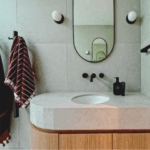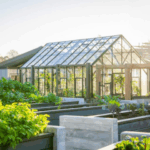Abandoned Grocery Store Transformed into Sake Brewery
In a unique blend of Japanese tradition and modern design, Tokyo-based Jun Mitsui & Associates, in collaboration with US studio Pelli Clarke & Partners, has transformed an abandoned grocery store in Hyde Park, New York, into the Dassai Blue Brewery, a state-of-the-art sake production facility.

GALLERY
The new 55,000 square foot (5,110 square metre) complex in the Hudson Valley is designed to host all stages of sake production, including rice washing, drying, steaming and fermentation.
This remarkable project marries elements of Japanese architecture with small-scale manufacturing, maintaining harmony with the historic atmosphere of the surrounding streetscape.
“Dassai Brewery is designed to harmonize beauty and functionality,” said Fred Clarke, partner at Pelli Clarke & Partners. “Visitors are invited to observe the brewing process in an environment that blends modern and traditional aesthetics as well as the built and natural world.”
The site consists of three buildings: the main brewery housed in the former Stop & Shop grocery store, a rice polishing building, and a wastewater treatment facility. The main brewery is a rectangular structure featuring wide-tin-covered eaves wrapped around its entrance, creating a covered walkway reminiscent of the Engawa—a traditional Japanese veranda.
“We have created a Japanese-style porch design that not only continues the interior space for tasting drinks and the landscape as an intermediate area, but also gently welcomes visiting guests,” said Jun Mitsui & Associates.
Inside, floor-to-ceiling windows line the front of the brewery, leading into a tasting room. The brewing facilities are centrally located and visible through several picture windows, allowing visitors to observe the production process during tours. The layout utilizes two pre-existing loading docks, facilitating a counter clockwise production flow from rice polishing to bottling and shipping.
The rice polishing building, situated across a parking lot and landscaped area designed by Reed-Hilderbrand, features Yakisugi charred cedar cladding, a gabled roof, and overhangs mirroring the main brewery’s eaves. Here, the outer layers of rice grains are stripped away, leaving the starch interior necessary for fermentation.
Currently, the brewery uses Yamada Nishiki rice imported from Japan, though efforts are underway to source this specific species locally from Isbell Farms in Arkansas to reduce the carbon footprint.
This project is part of an initiative by the Culinary Institute of America to promote sake education and awareness in the United States. “We hope that this facility will become part of the broadcast of Japanese culture into other countries and will grow up together with the local American culture,” Jun Mitsui & Associates added.
With its thoughtful design and educational mission, the Dassai Blue Brewery is poised to become a cultural and architectural landmark in Upstate New York.
Images by Pelli Clarke & Partners via Dezeen
Building a new home presents a blank canvas, allowing you to create bespoke spaces for comfortable day-to-day living ...
Greenhouses designed to nurture a more sustainable future for Australia. Established in 2007 by visionary entrepreneur John Herrick, Winter ...
This light-filled, custom-built Bayside residence by Dash Construct, is enhanced by light and architectural design that defines modern ...
Studio Tate has completed a lavish redesign of the 17th floor of a distinctive hexagonal building in Melbourne, ...










